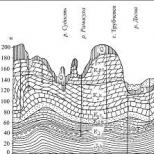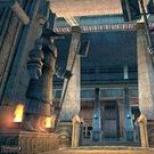Волк описание животного на английском языке. Рассказ про волка на английском языке
Рассказ на английском языке про волка
Ответы:
My favourite wild animal is wolf. It is very strong and dangerous. It lives in the forest. Its head isn’t big. Its neck is short. Its paws are small but very strong. Wolf has big clutches. Its eyes are small and cunning. Its ears are small. I think wolves are very clever but cruel. Мое любимое дикое животное волк. Он очень сильный и опасный. Он живет в лесу. Его голова не большая. Его шея короткая. Его лапы небольшие, но очень сильные. Волк имеет большие когти. Его глаза маленькие и хитрые. Его уши маленькие. Я думаю, что волки очень умные, но жестокие.
Похожие вопросы
- В городе запланировали строительство нового жилого района. При этом 1/18 всех домов кирпичные, 5/6 всех домов - блочные, и 6 домов панельные. Сколько всего домов запланировано построить в микрорайоне? по действиям пожалуйста
- Реши задачи. Вычисли и запиши ответы. (4 класс) В четырёх одинаковых кувшинках 48 стаканов воды а в двух банках 40 таких же стаканов. Вместимость чего больше: кувшина или банки и на сколько стаканов?
- в скобках 2 минус икс скобка закрывается плюс 3 скобка икс минус 3 скобка закрывается равно минус 13 как это решить у меня не получается
- К чему нельзя быть толлерантным
- Як пишеться слово непотребный
- Рассмотрим мировую экономику, состоящую из двух стран – А и Б, которые могут производить только два блага – Х и Y. Выберите верные утверждения: 1. Если А имеет абсолютное преимущество в производстве обоих товаров, то A имеет сравнительное преимущество в производстве обоих товаров 2.Если А не имеет сравнительного преимущества в производстве товара Х, то A не имеет и абсолютного преимущества в производстве товара Х 3.Может оказаться, что Б имеет абсолютное преимущество в производстве обоих товаров 4.Может оказаться, что Б имеет сравнительное преимущество в производстве обоих товаров 5.Если у А альтернативные издержки производства товара Х выше, чем у страны Б, то A будет иметь сравнительное преимущество в производстве товара Y
1. An elephant is a huge animal that lives in Africa and Asia. Elephants are grey, they have two big ears, two long teeth (tusks) and a long nose (a trunk). They eat leaves, plants, fruit and roots. Elephants are mammals.
2. A fox belongs to the dog family. It is a mammal. Foxes are red and they have beautiful fluffy tails. They are very cunning, they catch and eat small animals and birds. They live all over the world.
3. A giraffe is a tall animal with a long neck and thin long legs. Animals live in Africa, they eat tree leaves and fruit. Giraffes are mammals. Their bodies are covered with brown marks.
4. A rhinoceros is a large and heavy mammal that lives in Africa and Asia. It has one or two sharp horns on its head and it has thick skin. Rhinoceroses eat fruit, leaves and grass.
5. A hare is a small mammal with a short tail, long legs and long ears. Hares eat plants and fruit. They can jump and run very fast. Hares live in Europe and America.
6. A hedgehog is a small mammal covered in spines. It can roll in a ball. Hedgehogs hunt for insects, worms and small animals. They live in Asia, Africa and Europe.
7. A lion is a large wild cat. It is called “the king of beasts”. It has sharp teeth and claws, a big head and a long tail. Lions are predators, they hunt for other animals. Animals live in Africa and India in groups called prides. Lions are very strong, smart and cunning.
8. A bear is a large mammal. Bears have large paws with sharp claws. They can climb and swim very well. They live all around the world. Animals like to eat meat, fish, plants, fruit, berries and honey. Bears have a sweet tooth.
9. A camel is a large mammal. It lives in Africa. It eats vegetation: plants, grass and grain. Camels have a long neck and two humps. They can live without water for 10 months.
10. A wolf is a wild mammal. Wolves are of grey colour and they look like dogs. They are smart predators and eat other animals. Wolves live in small groups in forests and mountains.
11. A crocodile is a large dangerous animal that lives in rivers and lakes of Africa, Asia, Australia and America. Predators eat fish and mammals. They can swim and run very fast.
12. A zebra belongs to the horse family. It is a striped black-and-white mammal. Zebras live in Africa in groups (herds). They eat vegetation. They can run and kick with their strong legs.
13. A monkey is a small animal with a long tail. Monkeys live in the forests of America, Africa and Asia. Animals are very funny, smart and active. Monkeys can run, jump, climb and play with each other. They like to eat fruit, nuts, berries, eggs and insects.
14. A panda is a white-and-black mammal. It lives in the forests of China. It can climb very well. Pandas look like fluffy bears. They eat bamboo trees, plants and small animals.
15. A kangaroo is a mammal that lives in Australia. It eats plants and leaves. Kangaroos have strong long legs and they can hop very fast. They also have a pocket on their stomach where they can carry their babies.
16. A squirrel is a small pretty animal. It has a fluffy tail. It lives in trees all over the world. Squirrels eat nuts, berries, fruit and insects. They can jump and climb trees.

Перевод
1. Слон – огромное животное, обитающее в Африке и Азии. Слоны серого цвета, у них два больших уха, два длинных зуба (бивня) и длинный нос (хобот). Они питаются листьями, растениями, фруктами и корнями. Слоны являются млекопитающими животными.
2. Лиса принадлежит семейству собачьих. Это млекопитающее животное. Лисы рыжего цвета, у них красивые пушистые хвосты. Они очень хитрые, они ловят и едят маленьких животных и птичек. Они обитают по всему миру.
3. Жираф – высокое животное с длинной шеей и тонкими длинными ногами. Животные обитают в Африке, они питаются листьями деревьев и фруктами. Жирафы – млекопитающие животные. Их тела покрыты коричневыми пятнами.
4. Носорог – большое и тяжелое млекопитающее животное, обитающее в Африке и Азии. У него имеется один или два острых рога на голове, и у него толстая кожа. Носороги питаются фруктами, листьями и травой.
5. Заяц – это маленькое млекопитающее животное с коротким хвостиком, длинными лапами и длинными ушами. Зайцы питаются растениями и фруктами. Они могут прыгать и бегать очень быстро. Зайцы обитают в Европе и Америке.
6. Еж – маленькое млекопитающее животное, покрытое иголками. Он может сворачиваться в клубок. Ежи охотятся на насекомых, червяков и маленьких животных. Они обитают в Азии, Африке и Европе.
7. Лев – это большая дикая кошка. Его называют «царем зверей». У него острые зубы и когти, большая голова и длинный хвост. Львы – хищники, они охотятся на других животных. Животные обитают в Африке и Индии группами, которые называются прайдами. Львы – очень сильные, умные и коварные.
8. Медведь – большое млекопитающее животное. У медведей большие лапы с острыми когтями. Они очень хорошо умеют лазить вверх и плавать. Они обитают по всему миру. Животные питаются мясом, рыбой, растениями, фруктами, ягодами и медом. Медведи – сластены.
9. Верблюд – большое млекопитающее животное. Он обитает в Африке. Он питается растительностью: растениями, травой и зерном. Верблюды имеют длинную шею и два горба. Они могут прожить без воды 10 месяцев.
10. Волк – это дикое млекопитающее. Волки серого цвета, и они похожи на собак. Они являются умными хищниками и поедают других животных. Волки живут маленькими группами в лесах и горах.
11. Крокодил – большое опасное животное, обитающее в реках и озерах Африки, Азии, Австралии и Америки. Хищники питаются рыбой и млекопитающими. Они умеют плавать и бегать очень быстро.
12. Зебра принадлежит к семейству лошадиных. Это полосатое черно-белое млекопитающее животное. Зебры обитают в Африке группами (стадами). Они питаются растительностью. Они умеют бегать и лягаться своими крепкими ногами.
13. Обезьяна – маленькое животное с длинным хвостом. Обезьяны обитают в лесах Америки, Африки и Азии. Животные очень забавные, умные и активные. Обезьянки умеют бегать, прыгать, лазить и играть друг с другом. Они любят есть фрукты, орехи, ягоды, яйца и насекомых.
Пивоваров Михаил. Центр образования "ТАЛИС", Йошкар-Ола, республика Марий Эл, Россия
Сочинение на английском языке с переводом. Номинация Мой мир.
The Red wolf
Red wolves are rare animals. They survived the Ice Age. There are one hundred red wolves. Red wolves live in forests in the USA. They eat mice and rabbits. Some shopkeepers put red wolves in cages and sell. Many wolves were killed in XX century. Red wolves are in danger because men cut down trees and destroy forests and wolves’ homes. People can help red wolves. They can move the wolves in the national parks where people can’t hunt them.
Рыжие волки редкие животные. Рыжие волки пережили ледниковый период. Сейчас около ста рыжих волков. Они живут в лесах США. Они едят мышей и кроликов. Владельцы магазинов иногда сажают рыжих волков в клетки и продают. Много волков убили в 20-м веке. Рыжие волки в опасности, потому что люди вырубают деревья, уничтожают леса. Люди могут помочь рыжим волкам. Они могут перевезти их в национальные заповедники, где люди не смогут на них охотиться.
Wolf Children
Many strange children were found in the world. They were called wolf children. These children had grown up without any contact with human society. The three most mysterious of them that I am going to show about were Kamala, Viktor and Kaspar.
12-year-old boy was captured. His movements resembled the movements of wild animals. The boy was naked. The boy was small for his age. He was deeply tanned and covered in scars and scratches from his life in the forests. He could not speak and did not react even if shouted in his ear; He refused to wear clothes, ripping them off whatever the weather. He would only eat familiar food such as potatoes or walnuts. He walked uncertainly. There was no connection between his mind and his body, and that he reflected on nothing, he had no imagination, no memory. Itard began by using a system of rewards and punishments. At first, Itard rewarded any sound Victor made. Using simple painful method, over some months Itard taught Victor the names of some household objects. Itard tried every way he could think of to teach Victor language. Used letters, Itard would spell out words like "bring book" and then demonstrate the action to Victor so that he would understand. Victor, however, was strangely wooden even in the use of the limited vocabulary he had learnt - as if the words did not have any meaning. When after five years of tuition, Victor"s progress remained on very low level, Itard had to admit defeat. Itard handed Victor over to the care of his housekeeper who faithfully cared for him until he died in his forties, house-trained but still half-wild, fearful and mute.
Kamala was very similar. The girl seemed to have no trace of humanness in the way she acted and thought. It was as if she had the mind of a wolf. She tore off any clothes put on and would only eat raw meat. She only came awake after the moon rose. Kamala never smiled or showed any interest in human company. The only emotion that she showed was fear. Even her senses had become wolf-like. Singh claimed her eyes were super sharp at night. Her hearing was also sharp - except, like Victor, she could not understand the human speech. Gradually, Singh trained Kamala to accept other human ways, teaching her to eat normal food, to sleep with the other children and to welcome the company of fellow humans. However, when it came to teaching her to speak, Singh struggled. With Kamala, progress was slow. After several more years, her vocabulary had increased. In addition, Kamala"s words were only partly formed and her grammar stilted. But Kamala would only pronounce half the word. Kamala’s progress, at the age of 16, after nine years in the care of the orphanage, she still had the mind of a two and a half year old.
A strange boy was found in Nurnberg. He was about 16 years old and when given paper and pencil, he wrote the name “Kaspar Hauser.” He was taken into custody. The custodian took Kaspar into his house and watched him. He had an innocent smile, but that was all his face would express, and he did not know how to use his fingers at all. When he tried to walk, he stumbled like a toddler. Kasper learned to talk in broken sentences. He could only eat bread and water; other food would not stay with him. He did not seem to be aware of the difference between men and women at all. He was capable of speech, but it was mainly incoherent. He was able to tell the mayor that he had lived in a cell in Nuremberg all his life and he did not know if it had been day or night. Kaspar showed some similarities with children who are learning language, and had made considerable progress in reading and writing. However, he was not a wolf child that Kamala and Victor. He had been caged - therefore he had learnt little about human society until he had been released at the age of 16.
The most important feature shared by the children was that none of them could speak - and they all had tremendous difficulty learning to speak once captured. The children could hear - and so were not simply deaf - but they did not understand human voice excluding Kaspar. Almost equally surprising, the stories of wolf children suggest that walking upright is not an innate skill in human infants. They also were afraid of their captors. A final characteristic shared by the wolf children was that they seemed somehow to lack memory and self-awareness. They could make simple associations and learn to recognize familiar people and situations. However, they seemed unable to reflect on the past or the future. Only one of them, Kaspar, was able to develop the ability to speak, write, and was interested in human company. He appeared to be the most successful in learning how to talk, but Kaspar had not been raised in the wild. The early experiences of children greatly influenced their capacity to learn later.
Рассказ про волка на английском языке с переводом и интересные факты помогут подготовиться к уроку.
Рассказ о волке на английском языке
A wolf is the largest carnivorous animal of the dog family. The wolf is a strong and powerful animal. The weight and size of a wolf can vary greatly worldwide. It has strong jaw and sharp teeth with a bushy tail. It has very keen eyesight. The wolf eats mostly deer, elk, beaver and moose. A wolf can eat up to 9kg on one meal alone. This includes the bones, fur and meat.
The life span of a wolf is 12-14 years. The wolves are highly social animals that live in small groups called packs.
Wolves are not particularly fast, with a top speed of about 45km/h. They instead rely on its hearing and sense of smell to detect prey. They have remarkable powers of endurance and are known to follow their target all day and night if necessary.
Сочинение про волка на английском языке с переводом
Волк — самое большое плотоядное животное семейства собак. Волк — сильное и мощное животное. Вес и размер волка могут сильно различаться во всем мире. У него сильная челюсть и острые зубы с густым хвостом. Он имеет очень острое зрение. Волк ест преимущественно оленей, лосей, бобров и лосей. Волк может съесть до 9 кг только за один раз. Это включает кости, шерсть и мясо.
Продолжительность жизни волка составляет 12-14 лет. Волки — очень социальные животные, которые живут в небольших группах, которые называются стаями.





